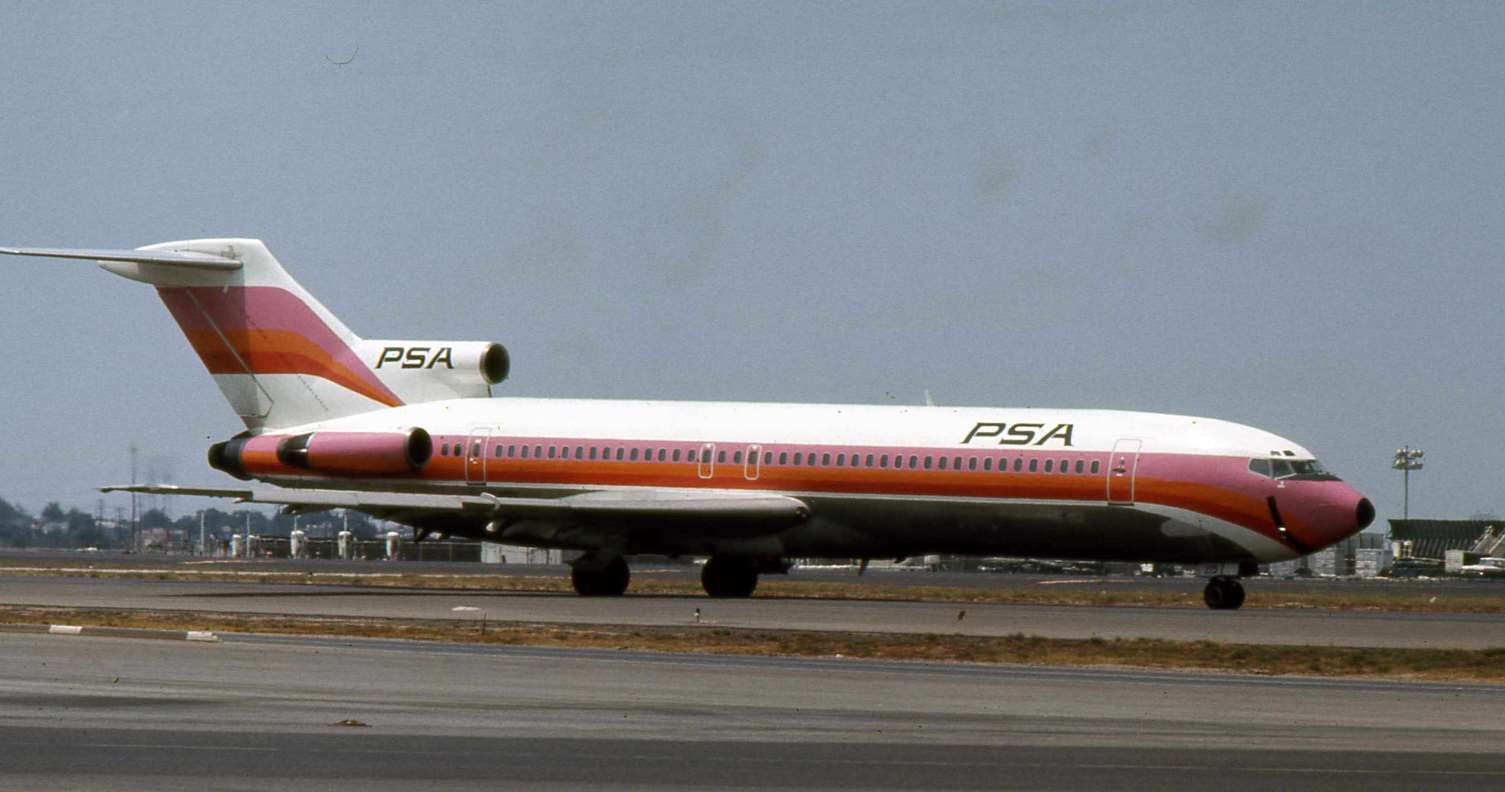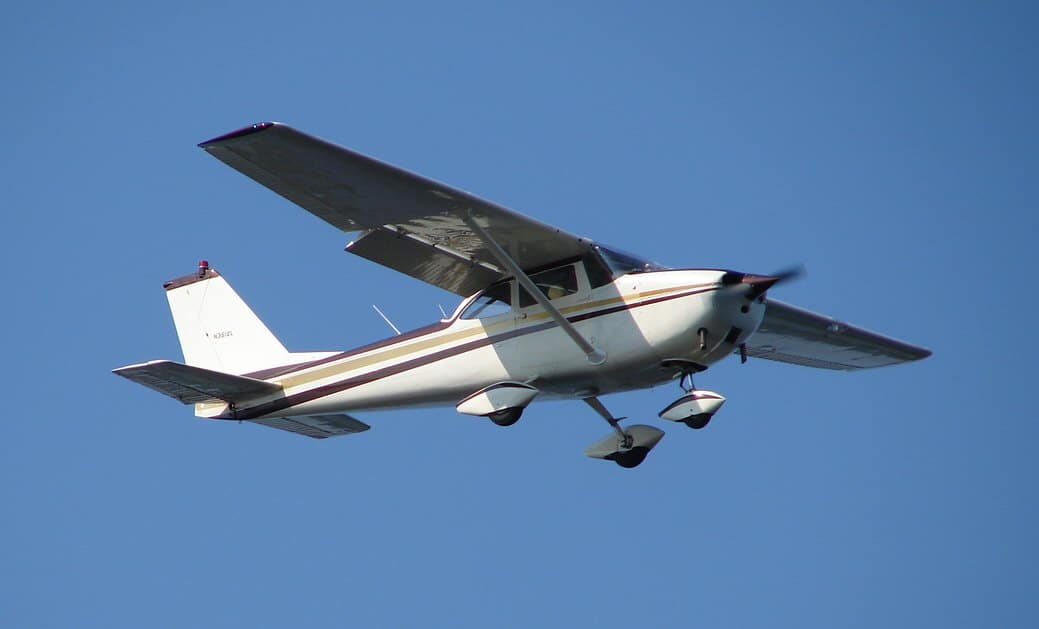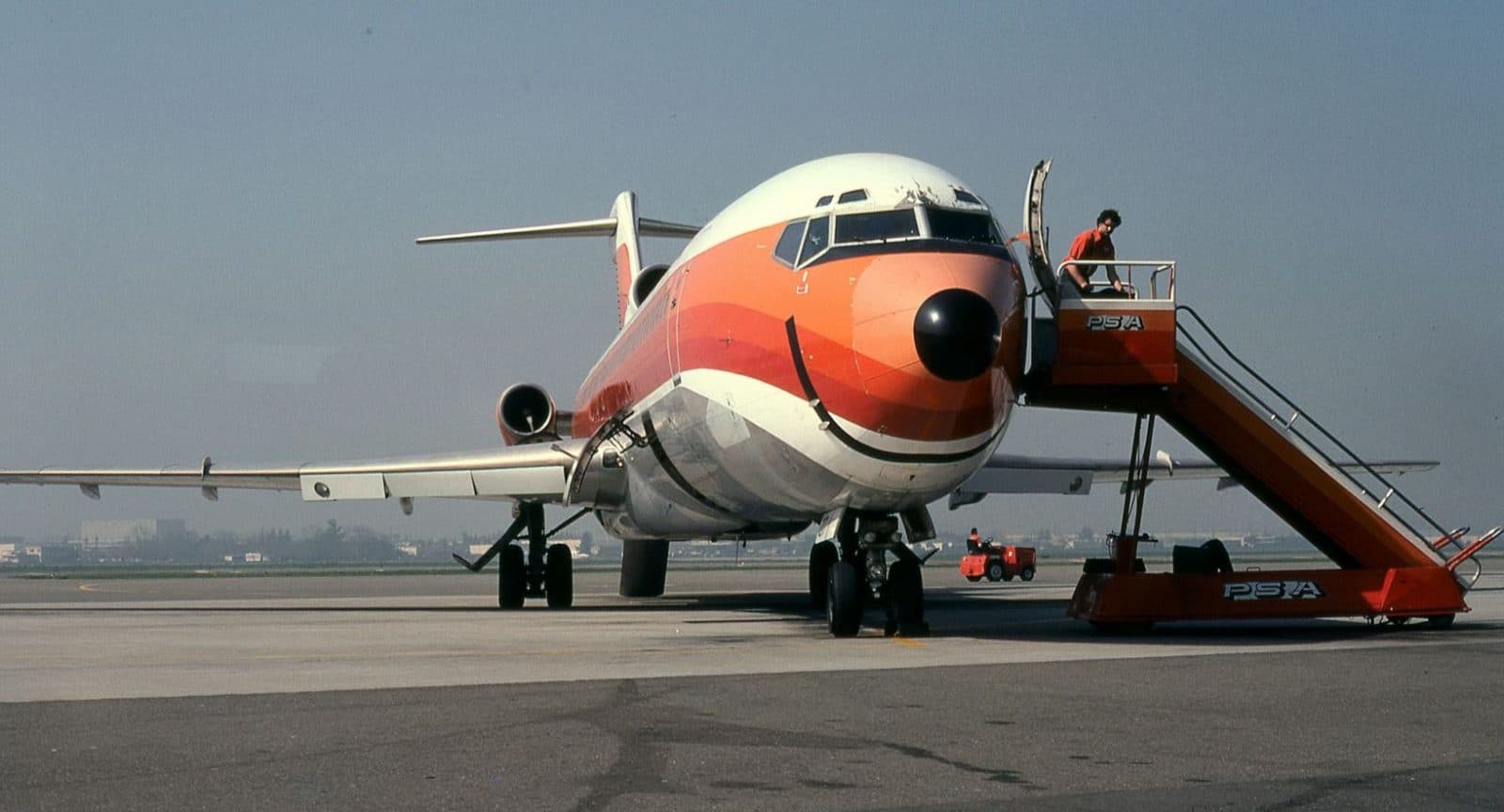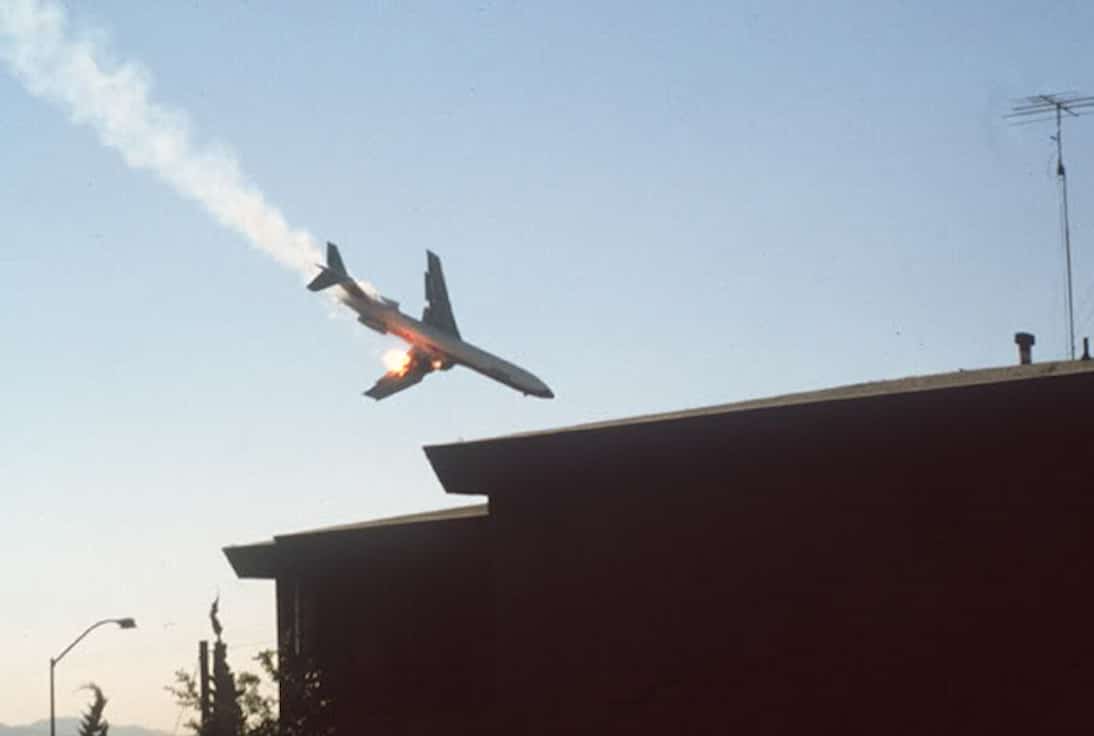The 1978 Midair Collision Over San Diego Was Entirely Avoidable
At 0834 local time on 25 September 1978, Pacific Southwest Airlines (PSA) Flight 182 departed Los Angeles International Airport (KLAX) bound for Lindbergh Field (now San Diego International Airport- KSAN). The flight originated in Sacramento (KSMF) and stopped at KLAX before heading south to San Diego. The flight was a Boeing 727-214 serial number 19688/589 registered as N533PS. The jet had 24,088 hours on the clock over 36,557 cycles and had flown for the first time on 4 June 1968.

Experienced Pilots in the Cessna 172
At 0816 local time, Cessna 172 N7711G took off from Montgomery Field about 6 miles north of San Diego. The aircraft, owned by Gibbs Flite Center and flown by a pair of experienced licensed pilots with more than 5,500 hours of flight time between them, shot a couple of practice ILS approaches on Runway 9 at Lindbergh Field- the only airport equipped with an ILS system in the area that fateful morning. N7711G was instructed to maintain visual flight rules (VFR) at or below 3,500 feet and to fly a course of 070.

Even More Experienced Pilots in the 727
PSA Flight 182, a Boeing 727-200, was operated that morning by a San Diego–based crew: Captain James McFeron, 42; First Officer Robert Fox, 38, who was at the controls; and Flight Engineer Martin Wahne, 44. Off-duty Captain Spencer Nelson occupied the cockpit jump seat. On board were 127 passengers, including 29 PSA employees.
Like most mornings in the San Diego area, the weather that morning was clear and sunny with a visibility of 10 miles. Near CAVU. The 727 was cleared for approach on runway 27 and informed of the traffic in front of them on a reciprocal course, as was the Cessna. The two aircraft should have been able to maintain separation visually. But sadly, they did not.

The Impact
At 0901 local time, the aircraft collided at an altitude of approximately 2,600 feet. Flight 182 was descending on their approach to Lindbergh and overtook the Cessna, which was climbing wings level. N7711G broke up immediately after impact. The 727’s inner right wing was heavily damaged, causing the wing fuel tank to leak and burn. The 727 entered a shallow right-banked turn and descended until it crashed into North Park in San Diego, approximately three miles from Lindbergh Field.
The Cessna came down approximately ¾ of a mile from the 727. All souls on board both aircraft perished in the crash, along with seven people on the ground. There were nine injured on the ground, and at least 22 homes were affected by the impacts.

The Blame
So how did this happen? According to the National Transportation Safety Board (NTSB), “The failure of the flightcrew of Flight 182 to comply with the provisions of a maintain-visual-separation clearance, including the requirement to inform the controller when visual contact was lost; and the air traffic control procedures in effect which authorized the controllers to use visual separation procedures in a terminal area environment when the capability was available to provide either lateral or vertical separation to either aircraft.
Contributing to the accident were (1) the failure of the controller to advise Flight 182 of the direction of movement of the Cessna; (2) the failure of the pilot of the Cessna to maintain his assigned heading; and (3) the improper resolution by the controller of the conflict alert.”

The Unfortunate Record That Was Broken All Too Soon
At that time, the PSA Flight 182 crash was the deadliest commercial air disaster to occur in the United States. Sadly, it did not remain so for long. Just eight months later, on 25 May 1979, a McDonnell Douglas DC-10-10 operating as American Airlines Flight 191 crashed after takeoff from Chicago’s O’Hare International Airport (KORD). The tragedy in San Diego remains the deadliest in California history. Here is a link to the NTSB Accident report.

My dad and god-father were first firefighters on the scene that day, it is still very hard for them to talk about to this day.